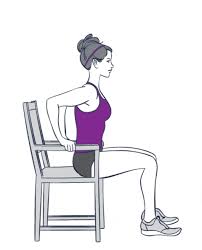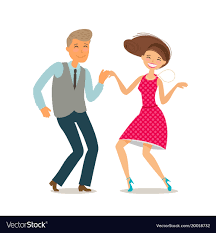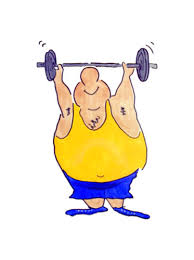Introduction
The eight-session course on the Country House in the Twentieth Century is progressing well. Six meetings have already taken place and even though we still have almost fifty years to cover, Roger is confident that he will be able to reach the Millennium by the time the course concludes on Monday March 7th. The large hall has provided a good venue and the end wall of the room has served as a giant screen, a great improvement on the much smaller screen that we have previously had to erect and position before use.
Details of our forthcoming meeting are given below. The usual protective measures will apply. Members might also like to be reminded that our third multi-session course, The Secret Life of the Human Brain, presented by Alan Potter, starts on 25th April. There are seven weekly sessions on Monday mornings at 10.30 am and the cost is £35. There has already been a good take-up for this course, but places are still available. Registrations are made in the usual manner by an application to John Sharp, with payments by BACS as well as by cheque being accepted.
The Committee met by Zoom on Monday 31st January. We reviewed the working of the current 2021-2 Programme and were pleased that it had gone well, despite the current difficulties. At the request of the church we have agreed to experiment again with becoming keyholders and unlocking and locking the hall. All goes well with finance and membership, and we currently have sufficient articles for another edition of Forum. However, contributions are always welcome. For 2022-3 we hope to have (at least) three courses on similar lines to the current year.and to increase the number of lectures from four to six. Names of possible speakers have been put forward, and we already have promise of a varied and interesting programme. Planning this programme will be the major item for the next Committee meeting on Monday 21st March.
Members are reminded that the website (address above) contains the latest information about SUES.
This edition contains an article by Peter Firth on anagrams. Those of us who regularly undertake cryptic crosswords will be well aware of the clever rearrangements of letters that compilers contrive, but Peter takes us much further into the intricacies of the matter. The second piece by Alan Potter on fitness is very useful guide on how science can help us to maintain our health, especially at a time of restrictions.
Mental exercise is equally important, and we have some more quizzes in the bank for future editions.
Forthcoming Friday Meeting: The Scarisbricks of Scarisbrick Hall
Friday 25th February at 2.30 pm at All Saints Church Hall

The next Friday talk will be delivered by one of own members, Mary Ormsby. It will be part 1 of what is intended to be two events on the Scarisbrick family of Scarisbrick Hall. This first talk will cover the period from the time the family first established itself in Scarisbrick in the 12th century up to the death of Charles Scarisbrick in 1860. By this time the family had established itself as a major landowner and Charles was said to the richest commoner in England.
We will see things such as the start of the family feud, which in part led to the break-up of the estate, the building of the new Hall and the draining of Martin Mere. Mary hopes to show that Scarisbrick was not always a quiet backwater, but has a very interesting past, not just because of the Hall, which many members will have seen peering above the tree tops while driving between Ormskirk and Southport, but because of the range of the people who lived, worked and visited here.
The Crazy World of Anagrams
It was at primary school in New Brighton when I first discovered the love of words and language, not only meaning, but also origins/derivations, corrupted spelling, structure and wordplay. One of the first things to fascinate me was the anagram (Greek ana back/anew, gramma word). Typically, this means the formation of a new word by rearranging the letters of another word, or the creation of a new sentence or phrase by transposing the letters of a different sentence or phrase.
Not yet eleven years old, I bought a paperback entitled Pananagrams, published by Pan. I still have it today, over 60 years later, compiled by a so-called anagrammatist whose goal as a serious or skilled individual is to produce anagrams that reflect or comment on their subject. This book was in the form of a quiz which provided a clue to the answer and asked for an anagram of that particular word. The one that sticks in my mind most is: The place you would least wish to catch a disease → seaside. Another example was the instruction to be silent → listen.
Over the course of time, I have come across many other interesting examples, all relating to the meaning of the original in some way. These include:
astronomer → moon starer
dormitory → dirty room
schoolmaster → the classroom
punishments → nine thumps
conversation → voices rant on
mother-in-law → Hitler woman
parishioners → I hire parsons
expands → spandex
revolution → to love ruin
sweetheart → there we sat
the eyes → they see
debit card → bad credit
the morse code → here come dots
total abstainers → sit not at ale bars
circumstantial evidence → can ruin a selected victim
An anugram is a true anagram, involving synonymous ideas or meanings. Good examples are:
evil → vile
a gentleman → elegant man
eleven plus two → twelve plus one
All anugrams are anagrams, but very few anagrams are anugrams.
Close to anugrams are so-called auto-anagrams found in the car industry:
(Toyota) Camry → my car
(Hyundai) Elantra → a rental
(Fuji) Subaru → U R a bus, using a large dab of poetic licence.
In contrast to the anagram is the antigram which is an anagram with a meaning opposed to that of the original word or phrase:
restful → fluster
funeral → real fun
adultery → true lady
forty five → over fifty
Santa → Satan
Anagrams can sometimes change a proper noun or personal name into an appropriate sentence:
William Shakespeare → I am a weakish speller
Madam Curie → radium came
Ronald Wilson Reagan → insane Anglo warlord
George Bush → he bugs Gore
Victoria, England’s Queen → governs a nice quiet land
Florence Nightingale → flit on, cheering angel
Elvis → lives
(King) James Stuart → a just master
Tower of London → now one old fort
Clint Eastwood → old West action
Margaret Thatcher → Meg, the arch tartar
Tony Blair → brainy lot (new cabinet) → not by rail (comment on travel under Labour’s administration)
An unusual form of anagram is a semordnilap. This is a reverse spelling of a word that itself is a proper word, for example, regal lager or avid diva. From this description, you might be able to work out why they are called semordnilap.
One extreme anagram involves a sentence, contrived by using all 26 letters of the alphabet. For example, Mr Jock, TV quiz phd, bags few lynx. Probably memorable to those who were taught to type a few decades ago, a more realistic example, but with 35 letters, is: The quick brown fox jumps over the lazy dog.
Finally, perhaps, one step too far in the (often) crazy world of anagrams are anagraphs which involve some kind of image change. In simple terms, it takes a word like fiddling → flipping. This is done by re-arranging the letter order and turning some of them upside-down whereby the two ds have become ps. Another example would be tofu → font where the u has been turned into an n. There are even more extreme examples of anagram forming but I think anagraphs are far enough for now!
Turning to their origins, anagrams can be traced back to the time of the ancient Greeks, often used to find hidden and mystical meaning in names. They were also used to interpret aspects of meaning in the Hebrew Bible. For many centuries, anagrams in Latin have been considered witty and were popular throughout medieval Europe, although some of the vernacular word formations were somewhat fluid, that is, until spelling eventually became more fixed, as happened through the publication of Samuel Johnson’s A Dictionary of the English Language (1755). Even out of its own plural form – anagrams – emerges ars magna (the great art). One of the best Latin examples appears in the anagrammatic answer to Pilate’s questioning of Christ, as articulated from Quid est veritas? (What is truth?), transposed into Est vir qui adest (It is the man who is here).
In seventeenth-century Europe, anagrams were a literary passion, so much so that Louis XIII, king of France, appointed a royal anagrammatist (Thomas Billon) with a handsome annual pension of 1200 livres, serving between 1624-31 and 1640-47. His responsibilities at court included the composition of anagrammatic prophecies and amusing or mystical anagrams of people’s names, particularly as laudatory expressions. Most anagrams were in French, with many others in Latin, glorifying Louis and his wife, Anne of Austria, as well as previous kings of France, popes, emperors and many Christian saints.
In contrast, some notable literary celebrities, such as Jonathan Swift, ridiculed the pomposity and superstition of anagrams. In Gulliver’s Travels, his political satire, the natives of Tribnia (Britain) discover plots against them, using the anagrammatic method. Similarly, Lewis Carroll composed two anagrams out of William Ewart Gladstone → a wild man will go at trees → wild agitator, means well.
A little-known fact concerning the right to lampoon politicians in this way (and even royalty) was already enshrined into English law in 1215 when King John signed the Magna Carta (Anagram Act)! Anagrams are universal and occur in all languages. For those with a smattering of Spanish, a good example is dos + trece → tres + doce (2 + 13 → 3 + 12, which, of course, is a mathematical anagram itself, with both being anugrams, as well!). In fact, anagrams were frequently used by mathematicians and scientists, seeking to conceal their work. Isaac Newton, in a letter to fellow scientist, Leibniz, in 1677, used an encrypted code via Latin in the form of a message concerning what eventually became known as calculus: 6accdae13eff7i3ℓ9n4o4qrr4s8t12ux. I’ll have to ask Alan Potter to explain that one. It’s completely beyond me.
Today, wordplay games are where we see anagrams most. Clabbers is a variant of scrabble. The rules are the same except for one: all words have to be anagrams of real words. So, for example, if a player put down isnaetcr and was challenged, it would have to be demonstrated that there is a real word, namely, canister. Similarly, gulned would have to reveal lunged. Perhaps, not for me, though.
More popular is their relevance in crossword clues where anagrams are usually indicated by the inclusion of a descriptive term like confused or in disarray or, simply, into, as in the clue: Make our wench get it (not italicised) into the opposite scale, (7-6) → counter-weight. However, crossword compilers can be even more cryptic, as into can also be part of the anagram, as in the following: Businessman burst into tears (not italicised), (9) → stationer.
More recently, anagrams have found their way into Pub quizzes, as appear on the Internet. The following refer to the names of British actors and actresses:
Basil Ride Idris Elba
Lardy Mango Gary Oldman
Jaunty Regent Jenny Agutter
Ritual Jewels Julie Walters
Screen Annoy Sean Connery
Shrapnel Fine Ralph Fiennes
Blander by Then Brenda Blethyn
Monaco Swill Simon Callow
Gammon Retreat Gemma Arterton
Gnome Pigs Simon Pegg
There are many, many more games to be found on the Internet and elsewhere, based on the application of anagrams. One of these is the popular British TV game show ‘Countdown’ where contestants are given 30 seconds to make the longest word from nine random letters. Even comedians utilise anagrams in telling jokes, such as the likely reply of an anagrammatist when asked to name the four points of a compass: thorn, shout, seat and stew.
While anagramming might well be mainly a recreation, anagrams can also be applied to non-recreational uses. Not frivolous and much more serious, psychologists use anagram-oriented tests, often called “anagram solution tasks”, to assess the implicit memory of their patients.
In this brief sojourn through the world of anagrams, it would be inappropriate to omit reference to one enigmatic controversy surrounding someone who many people feel is the greatest playwright ever in the world. This arises from one word spoken by the character, Costard, in William Shakespeare’s Loves Labours Lost, V, i. “for thou art not so long by the head as honorificabilitudinitatibus.” This concocted Latin word is not out of place in that some of the accompanying dialogue is in Latin and much is made of wordplay by Costard and the other characters, as they act out the scene.
According to Sir Edward Durning-Lawrence, this word supports the cryptographic theory which attributes Shakespeare’s works to Francis Bacon. Derived from the Latin honorificabilitudo (honourableness), he transposes the 27-letter fabrication into the Latin: Hi ludi F Baconis nati tuiti orbi, translated as “These plays, F Bacon’s offspring, are preserved for the world.”
This assertion is well beyond my own personal appreciation of cryptic clues. I prefer to support Samuel Johnson’s claim that honorificabilitudinitatibus (the state of being loaded with honours) was the longest word known in English at the time.
For those still interested, there are ten examples of anagrams below. Either take a leisurely approach when attempting them or, as some are relatively easy, you might want to time yourself, as indicated. Whatever! Enjoy yourself! Anagrams are not meant to be a test of English grammar! They are just great fun! In the time allotted, there are at least the indicated number of anagrams in the following words:
2 from ear, 20 secs
2 from care, 20 secs
2 from asleep, 20 secs
2 from counter, 30 secs
4 from star, 30 secs
4 from crate, 30 secs
3 from canter, 30 secs
5 from crates, 45 secs
4 from prose, 45 secs
1 from carthorse, 60 secs!
In closing, no westerns harm exit fun! Sorry, it’s catching. Answers in the next Forum.
Peter Firth
Science Your Way to Fitness
At a talk to SUES members last December, I was able to draw the distinction between science and pseudoscience, which is, of course, false science. In many cases, the difference doesn’t really matter. For example, believing in the pseudoscience feng shui may simply help you de-clutter your house and become habitually tidier. However, in some cases, pseudoscience may give hope that turns out to be false such as taking some expensive herbal remedies for which there is no evidence of benefits. In some severe cases pseudoscience may in fact be harmful. Electroshock therapy was employed rather indiscriminately for over 100 years, even until the 1960s, and left many ‘patients’ suffering painfully as a result.
Taking Steps to Personal Health
Pseudoscience comes in many guises and, if it is relatively benign, it can become an accepted part of everyday life. For example, over 10 million people in the UK alone look each day to take 10,000 steps to aid their fitness. However, research suggests the 10,000 figure is pretty arbitrary when it comes to improving your fitness level.
In fact, it was in the run up to the Tokyo Olympics in 1964 that a company came up with a device they called a ‘mampo-meter’, which literally means a 10,000 step meter. That figure, which now has a whiff of ‘magic’ about it, didn’t come as a result from rigorous scientific studies, but was the result of a clever marketing campaign. Nevertheless, the sale of millions of gadgets to measure those steps, such as Fitbit Trackers, have been sold and many pounds spent in a way that does not necessarily represent value for money.
Subsequently, the medical journalist Michael Mosley, with the help of six volunteers and supporting researchers, investigated what might have the greatest impact on fitness: walking 10,000 steps per day or completing three 10-minute sessions of brisk walking per day (equaling around 3,000 steps), known as ‘Active 10’. A brisk walk should make you a bit out of breath but shouldn’t be gruelling. Mosley said, “You should be able to talk, but not sing”.
The volunteers were split into two groups and given activity trackers to wear. The first group incorporated 10,000 steps into their day, while the second completed Active 10. On comparing the data from the trackers by the end of the week, although the Active 10 group spent less time moving, they completed 30% more “moderate to vigorous activity” than the first group. This is the type of activity that has the most health benefits, and is linked to lowered risk of diabetes and heart disease.
In fact, Mosely went on to debunk other ‘pseudoscientific facts’ about health to show that improving your fitness doesn’t demand marathon-length runs or spending every night in the gym. This is good news for many as in the UK we waste around £600 million a year on unused gym memberships. As well as debunking the need to walk 10,000 steps each day, Mosely and his team identified other simple ways to keep fit.


Measuring Your Fitness Level
According to Mosley and his colleagues, you do not have to purchase expensive equipment or employ a trainer to measure your personal fitness. In fact you can embark on your fitness journey for free by testing your base level of fitness in your living room. One way of doing this is by finding out how long it takes you to stand up and sit down from a chair 10 times, without using your hands. All you need is a hard chair and a way to time yourself to get a “quick but relatively accurate” idea of your current fitness level.
As a loose rule it’s a case of the faster, the better. But men under 35 should be able to do 10 chair stands in 10 seconds or less, while women of the same age should be able to compete 10 in 12 seconds. Men aged 35-55 should be able to complete the test in 13 seconds, women in 15 seconds. Finally, men over 55 are considered in good physical fitness if they can complete the test in under 18 seconds and women, of that age, under 19 seconds.
Dance to Fitness
According to Mosley and his team, there is plenty of evidence that exercise is good for the brain, but dance seems to be “unusually beneficial”. As well as being physically active, dance classes require participants to multitask, learn a series of steps, remember the sequence and keep in time with the music.
To test the impact this has on the brain, a group of salsa dancers agreed to complete a series of mental tests to analyse their base level of intelligence and reflexes. One of the tests monitored decision-making and ability to avoid distraction, another looked at working memory and the ability to recognise patterns. The final test analyses our ability to anticipate and judge how fast objects are moving through space.
After 30 minutes of fast-paced salsa, the participants repeated the tests and improved in each and every area. Most notably, their scores for working memory improved by 18%. The scientists noted that they hadn’t seen a result like this for any other type of exercise, including running.


Lifting Any Weight is Good for You
Once you reach 35 years of age, and that includes all of us in SUES, you start to lose around 1% of your muscle mass each year, so building muscle is an important part of maintaining your overall fitness. The good news is you can benefit without lifting enormous weights.
A group of newbie weightlifters agreed to test lifting both heavy and light weights. They were instructed to curl a heavy weight with their right arm until they can’t keep going, then repeat the exercise on their left side with a light weight. The volunteers also did this with heavy and light weights on their legs. After six weeks of gym sessions repeating these exercises, the researchers re-tested their strength – only to find the size of the weight “didn’t make any difference”. There is no need to buy a set of graduated weights.
Arm strength increased by 18% across the group and leg strength by 25% – on both sides. And the participants didn’t appear lopsided because they were able to work out for longer with smaller weights.
Conclusion
Therefore, listening to the science rather than pseudoscience can have significant everyday benefits – in this case for your health. Science says:
- you can get fit by walking less than 10,000 steps a day,
- you can measure your fitness level with a chair,
- you can dance your way to greater fitness,
- you can lift any weight to be fitter not just heavy weights.
Knowing scientific facts in this case can reduce your stress by ensuring you don’t feel you are failing by not achieving what is set out as unfounded targets and, not only that, there is a chance you can save yourself some money too!
Alan Potter
Contacts
Chair: Alan Potter
alanspotter@hotmail.com
07713 428670
Secretary: Roger Mitchell
rg.mitchell@btinternet.com
01695 423594 (Texts preferred to calls)
Membership Secretary: Rob Firth
suesmembers74@gmail.com
01704 535914
Forum Editor: Chris Nelson
chris@niddart.co.uk
07960 117719
Facebook: facebook.com/groups/southportues
See our archive for previous editions of the SUES Forum!